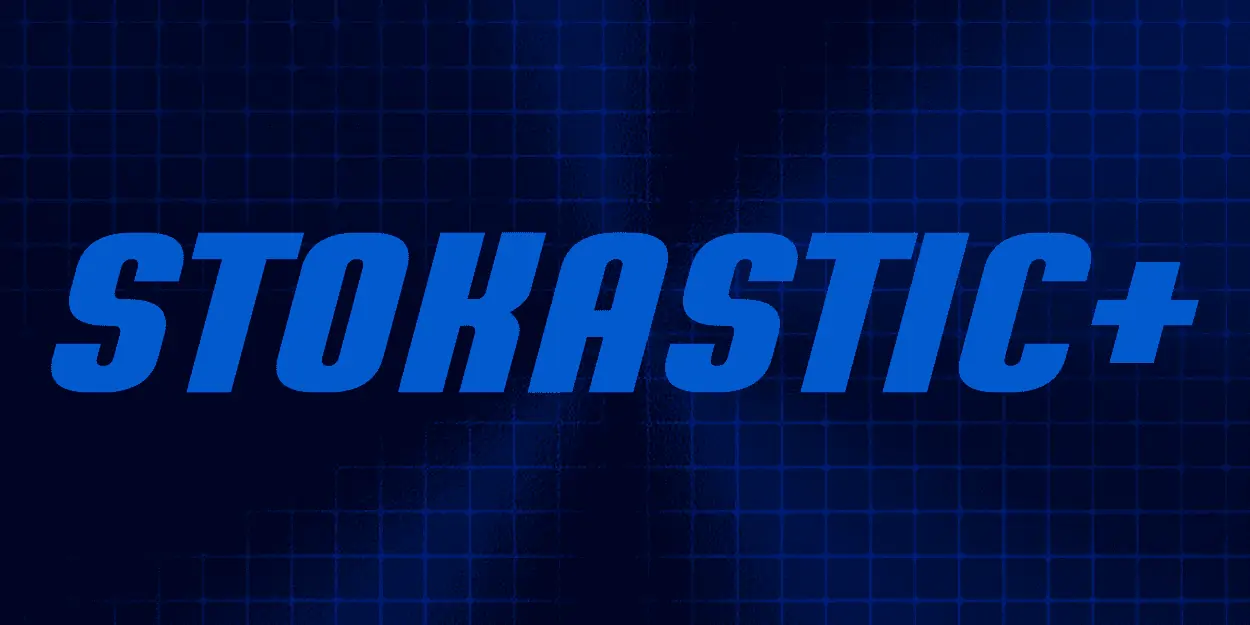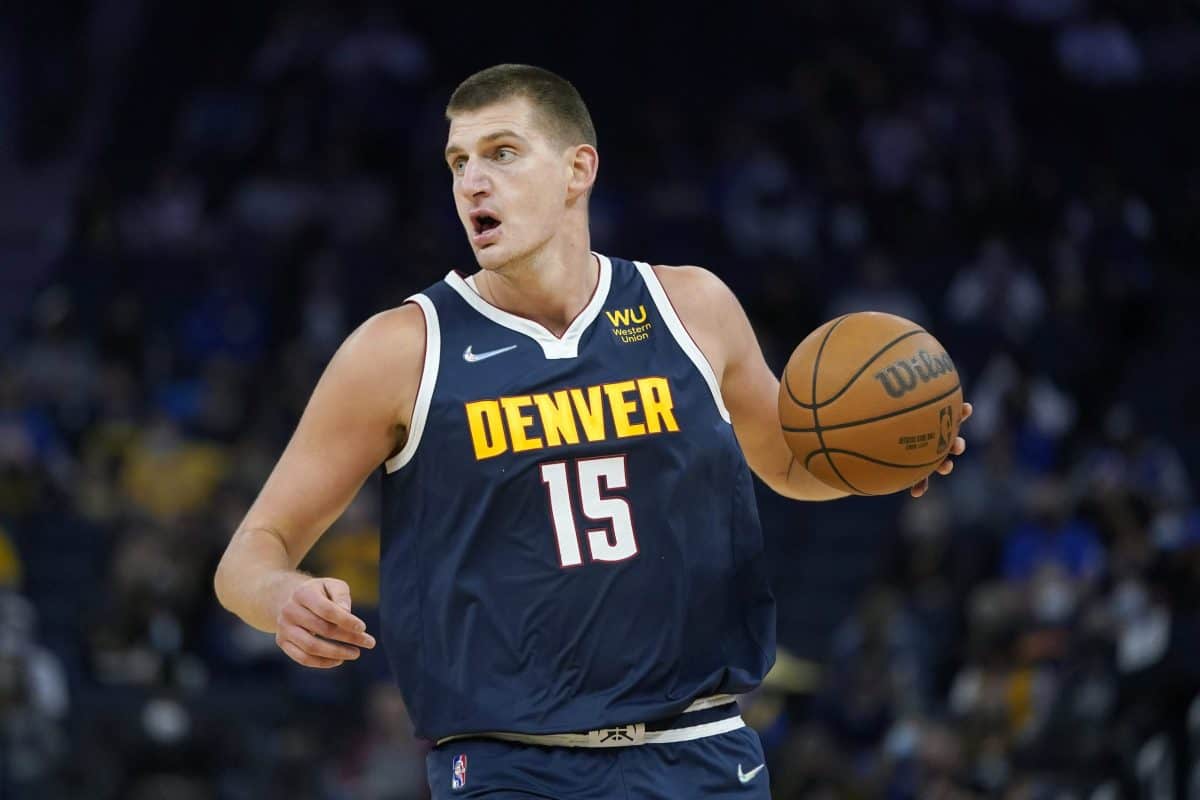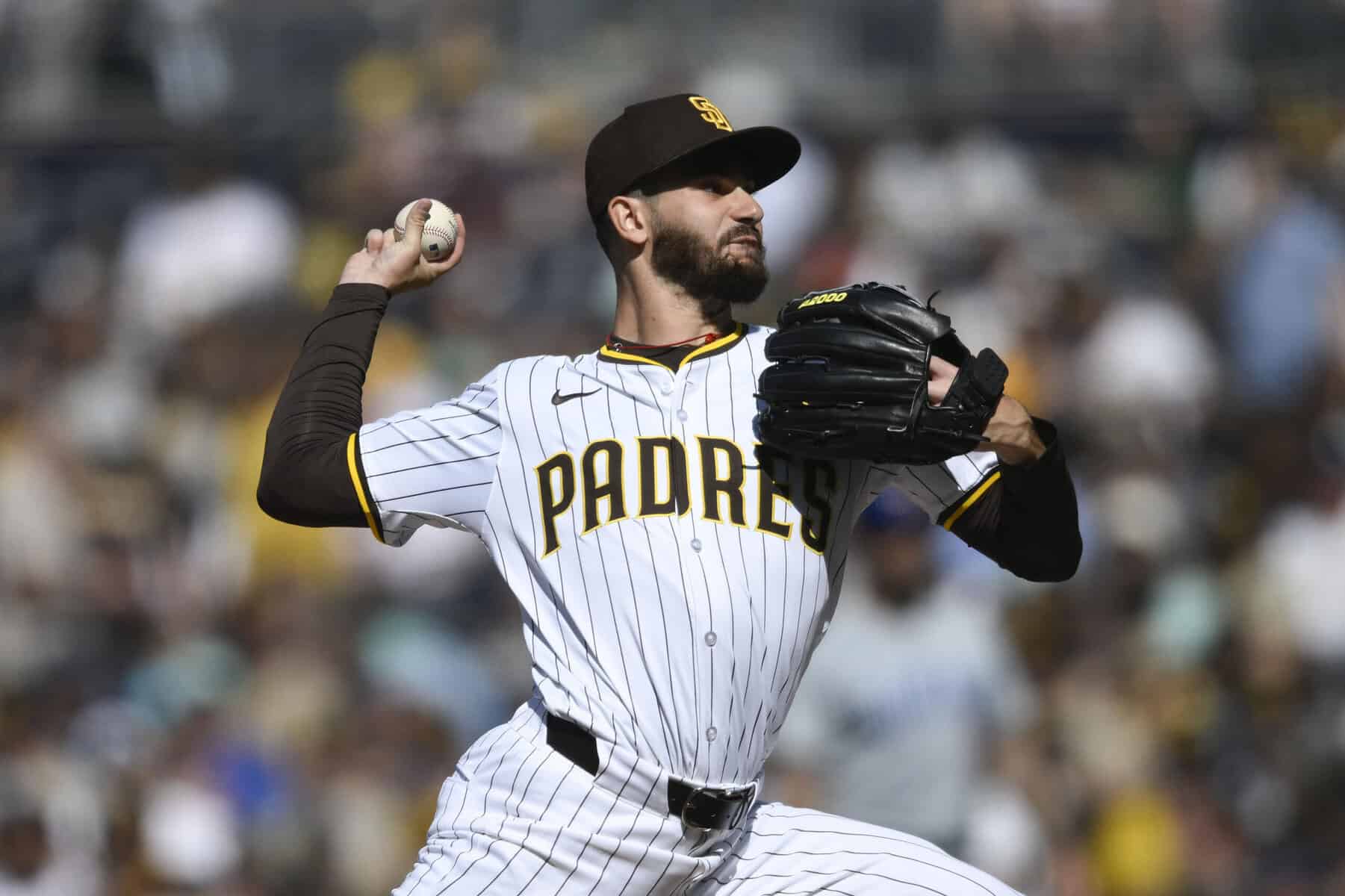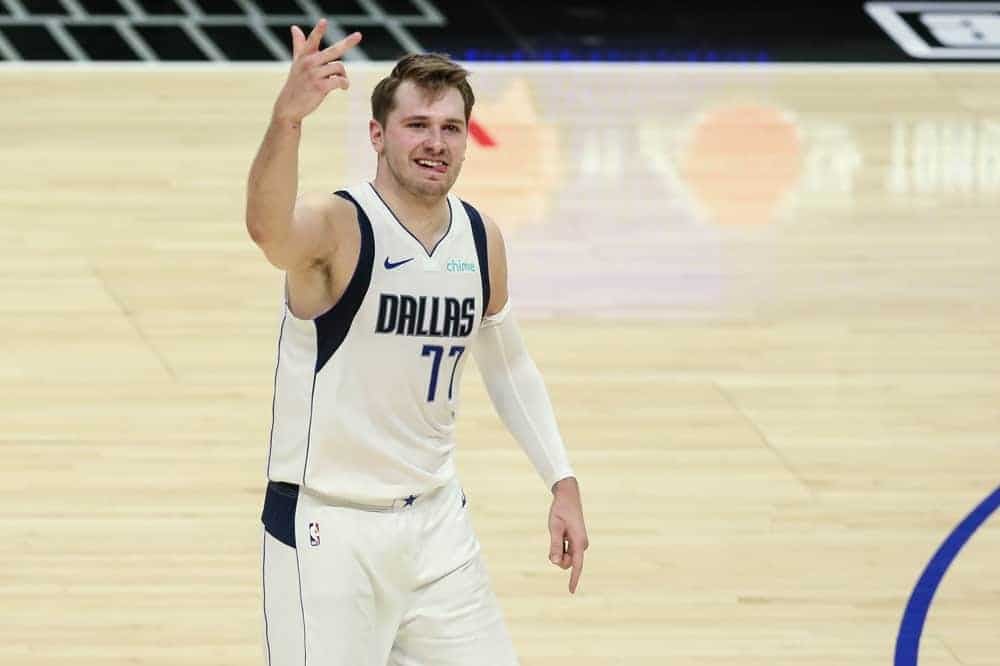Matt Gajewski’s new CFB DFS Picks article comes out every Friday afternoon for your college football daily fantasy needs on DraftKings and more. And don’t forget to check out the College Football DFS and Betting show every Saturday at 10 a.m. EST.
Ben Rasa's Favorite Breeders' Cup Bets Our Awesemo horse racing expert Ben Rasa breaks down all the Breeders' Cup contenders and pinpoints his favorite Breeders' Cup Bets and betting odds.Main CFB DFS Slate: DraftKings Breakdown
CFB DFS Matchup: Arizona State vs USC
CFB DFS Analysis: Arizona State (23 Team Total)
Offense – Herm Edwards is the head coach of Arizona State and he hired Zak Hill to coordinate his offense. Hill coordinated Boise State’s offense for the last three years. Boise threw 47.6% of the time (66th) and ran 73.2 plays per game. This should be beneficial for quarterback Jayden Daniels.
Jayden Daniels ($6,700) – Last year, Daniels completed 60.7% of his passes for 8.7 yards per attempt. Daniels only averaged 28 attempts per game, but he still managed 245 yards. He also ran for 355 cumulative yards, providing solid dual-threat upside.
DeaMonte Trayanum ($5,300) – DeaMonte Trayanum and Rachaad White were listed as co-starters on Arizona State’s depth chart. Trayanum is a four-star recruit and the No. 23 running back in the 2020 class. White is another three-star prospect, but he comes from the JUCO ranks.
Frank Darby ($5,700) – With Brandon Aiyuk in the NFL, Frank Darby is the team’s leading returning receiver. He notched 31 catches for 616 yards last year.
Ricky Pearsall ($4,000) – Ricky Pearsall plays primarily in the slot for Arizona State and he finished fifth on Arizona State in receiving. He managed 128 yards on seven catches for 18.3 yards per catch.
Johnny Wilson ($3,000) – Johnny Wilson was listed atop Arizona State’s depth chart as their WR3. Wilson is an incoming freshman. He is a four-star and the No. 21 wide receiver in the country.
CFB DFS Analysis: USC (33.5 Team Total)
Offense – Clay Helton enters his fifth season as USC’s head coach. His offensive coordinator is Graham Harrell. This is Harrell’s second season and last year they ran 71.8 plays per game (59th) and passed 58.1% of the time (7th).
Kedon Slovis ($7,800) – Heisman hopeful, Kedon Slovis performed like a seasoned veteran in his true freshman season in 2019. Slovis completed 71.9% of his passes for 8.9 yards per pass attempt. Slovis averaged 291.8 yards per game on 32.7 attempts per game. He is live for the 300-yard bonus weekly. He doesn’t offer anything with his legs, but he is still a solid play.
Vavae Malepeai ($5,000) – Vavae Malepeai projects to lead a timeshare on a run-heavy team. Between Malepeai, Stephen Carr ($6,400), Markese Stepp ($4,000), and Kenan Christon ($3,500) this is a situation to avoid.
Tyler Vaughns ($5,700) – Banged up for periods of last year, Tyler Vaughns finished with 912 yards on 95 total targets. He is a solid price-adjusted play on USC’s pass-happy team.
Amon-Ra St. Brown ($6,300) – After running primarily in the slot last year, Amon-Ra St. Brown looks likely to move his talents outside. While USC will rotate receivers in and out of the slot, Amon-Ra will play more outside. Last year, he turned 103 targets into 1,042 receiving yards (80.2 per game).
Drake London ($5,000) – Playing occasionally last year in the slot, Drake London projects to play an increased role in USC offense. London doubles as a scholarship basketball player for USC. Obviously his size plays a major role in this offense.
Bru McCoy ($3,700) – Former five-star recruit Bru McCoy finally projects to make his debut with USC. McCoy will play primarily in the slot and falls fourth in line for targets.
Find The Best Betting Odds All In One Place
Odds shopping is the best way to make sure you’re getting bang for your betting dollars. Please enjoy our new FREE website that shows you what each sports betting odds are in real time. You can sign up, track your bets, get notifications when a line moves and see how much money you’re making over time. Check it out right HERE.
CFB DFS Matchup: West Virginia vs Texas
CFB DFS Analysis: West Virginia (24.5 TT)
Offense – West Virginia retains Neal Brown as head coach for his second season. They moved former offensive coordinator Matt Moore to assistant head coach, while bringing in former Penn State pass game coordinator Gerad Parker to coordinate the offense. West Virginia returns three of five starting offensive linemen. They’re replacing both tackle positions, but they have some continuity here. They’re currently running 82 plays per game and passing 53.2% of the time.
Jarret Doege ($6,100) – Pure pocket passer Jarret Doege has rushed for -55 yards this year. Needing to hit the 300-yard bonus, Doege averages 280 passing yards on 38.7 attempts per game. Doege has passed 300 yards passing in each of his last three games.
Leddie Brown ($8,200) – One of the premier three-down backs on the slate, Leddie Brown continues to handle 25 opportunities per game. Brown has reached at least 23 touches in all four of his most recent games. He currently ranks fourth on West Virginia in overall targets (24), while rushing for 116 yards per game on the ground. He remains a bit too cheap here.
Sam James ($4,200) – Legitimately in the dog house after multiple drops this year, Sam James hasn’t eclipsed 33% of West Virginia’s routes in two straight weeks. His targets also dropped from seven to four last week.
Winston Wright ($5,100) – H-receiver Winston Wright came back down to Earth after his 12-target performance in Week 8. Last week, he saw three targets while running a route on 46% of drop backs.
Bryce Ford-Wheaton ($4,800) – X-receiver Bryce Ford-Wheaton continues to play the most among West Virginia receivers. He ran a route on at least 70% of drop backs in two straight weeks. This allowed him to see seven targets last week. He looks like the safest play with Doege moving forward.
Sean Ryan ($3,000) – With Sam James relegated to a rotational role and TJ Simmons still playing a reduced role due to injury, Sean Ryan has stepped into a larger workload at the minimum price. Ryan has target counts of 4, 5, and 1 in his three most recent games. However, he has a route rate of 68% or better in back-to-back weeks. He is a dart throw worth considering.
CFB DFS Analysis: Texas (30 Team Total)
Offense – Tom Herman remains the head coach of Texas, but Mike Yurcich comes over as the offensive coordinator after coordinating Ohio State’s passing game last year. So far this year, Texas is running 78.3 plays per game and passing 51.9-percent of the time. They draw a tough matchup against a strong West Virginia defense in this spot.
Sam Ehlinger ($9,300) – Steadily regressing in Texas’ suddenly run-heavy offense, Sam Ehlinger averages 276 passing yards on 36.8 attempts per game. Ehlinger currently leads Texas in rushing with 383 yards. After throwing 426 yards in Week 1, Ehlinger hasn’t eclipsed 287 yards in any of his last five games. He simply isn’t worth the elevated price.
Bijan Robinson ($4,500) – De-facto starter, Keaontay Ingram is out this week with a high ankle sprain. This narrows Texas’ backfield to Roschon Johnson ($4,100) and Bijan Robinson. Robinson out-carried former quarterback Johnson 12-9 in Texas’ most recent game. Robinson also saw two targets, while Johnson saw one. This will be a near even time share, but Robinson appears to have a slight edge. Both backs are cheap, but the matchup remains tough and Sam Ehlinger continues to pace the team in rushing overall.
Joshua Moore ($6,500) – Texas finally narrowed their receiver room, with Joshua Moore as the alpha. He has a 19.2% target share and will function as a top two option most weeks. He plays on the boundary.
Jake Smith ($5,000) – The only question with Moore’s role comes from Jake Smith. Texas’ starting slot receiver, Smith has only appeared in three games this year. However, he has target counts of 9, 3, and 10, while running a route on 78% of drop backs in his most recent game.
Brennan Eagles ($4,100) – Brennan Eagles ran a route on 80% of Texas’ drop backs, but he a distant third target here.
CFB DFS Matchup: North Carolina vs Duke
CFB DFS Analysis: North Carolina (37 Team Total)
Offense – Mack Brown returned as North Carolina’s head coach last year and did not disappoint. However, the offensive resurgence likely had more to do with Phil Longo’s air raid concepts. Longo’s offense ran 78.3 plays per game (8th) and passed 48.19-percent of the time last season. They also racked up 31.2 points per game (39th). So far this season, they’re running 64.2 plays per game and passing just 43.6% of the time. This likely has to do with an improved defense and a strong offensive line. North Carolina returned four starters on the offensive line, despite losing fourth-round draft pick Charlie Heck.
Sam Howell ($8,100) – After breaking out as a freshman in 2019, Sam Howell has continued his efficient play to start 2020. Throwing just 29.2 times per game, Howell averages 303 passing yards per game. Howell already has a pair of games north of 300 yards this year, including 443 in his most recent performance against Virginia. He also has 17 rushing yards on the year, preventing him from soaking negative rushing yards.
Javonte Williams ($8,500) – North Carolina utilizes a dual-back system, but both continue smash on a weekly basis. Javonte Williams comes in significantly more expensive, despite only out-touching counterpart Michael Carter 108 to 100 at this point in the season. Williams averages 107 rushing yards per game, but Carter looks just as efficient at a fraction of the price.
Michael Carter ($6,300) – Carter averages 108 rushing yards per game, on 12 fewer attempts than Williams receives. Carter also provides a slight edge in the receiving game with 17 targets to Williams’ 13. Playing both backs actually took down some GPPs earlier this year, but Carter remains the stronger price-adjusted play.
Dyami Brown ($7,700) – North Carolina’s alpha receiver, Dyami Brown has a 31% target share in this offense. A pure boundary receiver, Brown possesses elite big-play ability. He currently averages 106.8 receiving yards per game after eclipsing 1,000 receiving yards last year as a sophomore.
Dazz Newsome ($4,000) – Sharply regression from 2019’s 1,000-yard season, Dazz Newsome has a mere 15.2% target share this year. Newsome continues to run a route on most drop backs, making his reduced role more curious. He is a dart throw at this point.
Emery Simmons ($3,600) – Beau Corrales is slated to miss this game again. Simmons and Khafre Brown will split WR3 duties.
CFB DFS Analysis: Duke (25.5 Team Total)
Offense – David Cutcliffe remains the head coach of Duke and he took over play calling duties despite not acting in that capacity since the 2007 season, when he coached at Tennessee. To start the year, Duke has run 78.6 plays per game, with a 50.6% pass rate. Duke returned four starters along the offensive line and they also receive Stanford transfer Devery Hamilton. Hamilton started six games for Stanford in 2018, but suffered an injury last year. Despite the returning production, they’ve allowed Chase Brice to get sacked 19 times.
Chase Brice ($5,900) – Former Clemson signal caller, Chase Brice made his debut for Duke this year. Brice averages 35.3 attempts per game, but only 224 passing yards per game. Highly inefficient, Brice has yet to record a 300-yard passing game. Also a sack-taking machine, most of Brice’s dual threat ability is mitigated through sacks.
Deon Jackson ($5,100) – Deon Jackson remains Duke’s primary runner, despite his ten-carry game against Charlotte last week. The blowout allowed Mateo Durant to receive some extra work. Jackson averages 18.4 touches per game and 78 yards on the ground. He only has nine targets this year, making him tough to trust in negative game script. Unfortunately, that’s what bookmakers currently project for Duke.
Jake Bobo ($4,400) – Jake Bobo remains tied for a team-leading 36 targets with tight end Noah Gray. However, Duke appeared to narrow their wide receiver rotation coming out of the bye. Bobo ran a route on 89% of drop backs, while seeing 2 targets.
Jalon Calhoun ($4,000) – Similar to Bobo, Calhoun also benefited from the condensed opportunity. He ran a route on 74% of drop backs and received 4 targets.
CFB DFS Matchup: Michigan vs Indiana
CFB DFS Analysis: Michigan (29 Team Total)
Offense – Jim Harbaugh has coached Michigan since 2015, with Josh Gattis now coordinating his offense. Under Gattis last year, Michigan ran 71.2 plays per game (65th) and passed 47% of the time (70th). So far this year, they’re running 72 plays per game and passing 54.9% of the time. This is heavily influenced by a shootout against Michigan State. In their first game against Michigan, they exploited the run defense deficiencies of the Gophers.
Joe Milton ($7,400) – Former four-star quarterback, Joe Milton has thrown 36.5 passes and 264 passing yards per game through two games. Partially fueled by a shootout against Michigan State, the Wolverines typically employ a run-first offense. Milton does provide dual threat ability with 111 cumulative yards through a pair of games, keeping him in play.
Hassan Haskins ($5,800) – A devastating time share at the running back position, Hassan Haskins will split work with Zach Charbonnet ($4,000), Blake Corum ($4,700), and Chris Evans ($3,700). All will see receiver work to varying degrees, with Haskins leading the pack. However, none look particularly enticing from a volume standpoint. Indiana allows 186 rushing yards per game, making it a shame the matchup is wasted on Michigan’s running back rotation.
Ronnie Bell ($5,000) – Last year’s leading receiver with 48 catches and 758 yards, Ronnie Bell ranks second on Michigan with 13 targets. Bell racked up eight targets in a pass-heavy game script last week. Bell often lines up in the slot, finding advantageous matchups. He should remain the team’s top pass catcher.
Giles Jackson ($4,500) – With Nico Collins opting out of the season, Giles Jackson has played an increased role. He remains tied with Ronnie Bell in targets (13). However, he only ran a route on 60% of drop backs compared to 75% for Bell last week.
Erick All ($3,600) – Red-shirt freshman tight end Erick All currently leads Michigan in targets (15). He stands 6-4, 242-pounds and functions as a semi-move tight end. All ran a route on 81% and 60% of Michigan’s drop backs over the first two weeks.
CFB DFS Analysis: Indiana (25.5 Team Total)
Offense – Tom Allen has coached Indiana since 2016. This year, he promoted tight ends coach Nick Sheridan to offensive coordinator. This is the first play calling gig for Sheridan and he currently runs 66 plays per game with a 50% pass rate. Indiana returned three starters on the offensive line this year, seemingly helping them run the ball.
Michael Penix ($6,600) – Initially recruited as a dual threat, Michael Penix has shown a reluctance to run through two games. So far this year, Penix has just 17 rushing opportunities for 2 cumulative yards. Still, Penix ability to run makes him an interesting punt play. As a passer, Penix averages 31 attempts per game for 204 yards.
Stevie Scott ($6,500) – Indiana is anything but a timeshare, with Stevie Scott dominating backfield work. Scott averaged 23 attempts per game. He has only managed 70 yards per contest, but Scott also has at least three targets in every game this year. Chasing volume over efficiency makes sense at running back and Scott has paths to success here.
Whop Philyor ($5,800) – Indiana’s leading receiver last year, Whop Philyor turned in 1,002 yards on 70 receptions. Functioning primarily out of the slot, Philyor currently ranks second on Indiana with 16 targets. However, Philyor’s 173 yards easily lead the team. Philyor narrowly missed another 50+ yard touchdown in Week 1.
Ty Fryfogle ($4,300) – The cheapest of Indiana’s primary pass catching options, Ty Fryfogle currently leads the team in targets. While Philyor likely leads the team in receiving this year, Fryfogle provides a solid price-adjusted attachment to a pass-heavy offense. He has run a route on 96% of drop backs this year.
Peyton Hendershot ($4,600) – One of the Big Ten’s top tight ends, Peyton Hendershot remains a solid option within the offense. He has an 87% route rate and tied for a team-leading seven targets last week. Hendershot is a massive 6-4, 250-pound receiving threat for Indiana.
CFB DFS Matchup: Michigan State vs Iowa
CFB DFS Analysis: Michigan State (20 Team Total)
Offense – Mel Tucker comes over from Colorado to take control of Michigan State. His offensive coordinator is Jay Johnson, who coordinated his offense at Colorado. He ran 72.3 plays per game (53rd) and passed 49.8% of the time (49th). The Spartans are currently running 77.5 plays per game and passing 50.3% of the time. Michigan State returned five players with starting experience, despite losing their right tackle Jordan Reid to opt out. They also lost reserve Justin Stevens.
Rocky Lombardi ($6,800) – After spot staring on occasion over the last two years, Rocky Lombardi took over as Michigan State’s full-time signal caller in 2020. Through two games this year, he has thrown 37.5 and 321 passing yards per game. He has crested 300 passing yards in each of his first two games this year, including last week’s match against Michigan.
Jordon Simmons ($4,200) – Michigan State narrowed their backfield time-share from three to two last week against Michigan. After rushing for 998 yards last year, Elijah Collins hit the pine after accumulated three total yards on ten carries. Freshman, three-star back Jordon Simmons looks like the main rusher moving forward with Connor Heyward ($5,700) functioning as a pass catching back. Last week, Simmons narrowly out-touched Heyward 16-15. Neither looks particularly enticing against Iowa as 6.5-point underdogs. However, Simmons in particular remains cheap.
Jalen Nailor ($4,700) – Finally healthy, Jalen Nailor leads Michigan State with 21 targets through two games. Despite the 30.4% target share, he is the third-most expensive pass catcher.
Jayden Reed ($5,900) – After sitting out last year due to transfer regulations, Jayden Reed looks like a pivotal target in Michigan State’s offense. Reed notched 797 receiving yards as a true freshman at Western Michigan. Through two games, he ranks second on the team in targets (17). Reed primarily plays the slot for the Spartans.
Ricky White ($5,000) – Impressive freshman Ricky White popped up for a monster 196-yards, one-touchdown game against Michigan. White stands 6-1, 175-pounds and as a three-star recruit. He was the No. 70 wide receiver in the 2020 class. White actually led the team with an 81% route rate last week. Reed notched a 78% route rate while Nailor came in 69%.
CFB DFS Analysis: Iowa (26.5 Team Total)
Offense – Iowa’s head coach is Kirk Ferentz and his nepotistic coaching staff features his son Brian Ferentz at offensive coordinator. Iowa is currently running 75 plays per game and passing 60.7% of the time. They’ve been getting smashed so far this year, so their offense looks very different. Last year, they rank 68.5 plays per game and passed 49.1% of the time.
Spencer Petras ($5,800) – Already playing in Iowa’s neutered offense, Spencer Petras has averaged an inefficient 241 passing yards on 44.5 pass attempts. Petras doesn’t offer much dual threat ability and looks unlikely to hit the 300-yard bonus on most occasions. With Michigan State excelling on defense, Petras looks like a longshot to hit value here.
Tyler Goodson ($6,100) – Sophomore Tyler Goodson leads Iowa’s rushing attack with 19 opportunities per game. Mekhi Sargent has mixed in for 7.5 touches himself, but that number dropped to five in Iowa’s most recent game. Goodson provides excellent pass catching ability with nine targets through two games. With Iowa slowly committing to their sophomore back, he could be a sneaky play on the college football DFS slate.
Sam LaPorta ($4,200) – Tight end Sam LaPorta currently leads Iowa in targets (18) and receiving yards (106). LaPorta has a team leading 83% route rate this year.
Brandon Smith ($5,100) – 2019 leading receiver Ihmir Smith-Marsette is suspended after a DUI. Brandon Smith notched 37 catches for 439 yards last year. He currently ranks second on the team with 14 targets. Smith’s 80% route rate ranks only behind LaPorta.
Nico Ragaini ($4,000) –Slot specialist Nico Raigaini has 11 targets this year, but he could be leaned on increasingly without Smith-Marsette. Ragaini already plays healthy role in this offense. Tyrone Tracy could play a larger role as well. He has only ran a route on 39% of drop-backs after ranking second on the team in receiving yards last year.
CFB DFS Matchup: Florida vs Georgia
CFB DFS Analysis: Florida (25.5 Team Total)
Offense – Dan Mullen remains the head coach, but he promoted within at offensive coordinator this offseason. Brian Johnson will now run the offense after serving as an offensive analyst. Florida runs a spread attack and they often put four-wide on the field. They’re currently running 64.5 plays per game with a 56.6% pass rate. This offensive line struggled at times last year, but they return four of five starters and earned a transfer in Stewart Reese from Mississippi State. He started multiple seasons there. Quarterback Kyle Trask has only been sacked four times this year.
Kyle Trask ($8,100) – Extremely efficient to start the year, Kyle Trask averages 336 passing yards per game on 34.8 pass attempts. Trask has eclipsed 300 yards in three of his four games this year with only South Carolina holding him in check. Georgia presents his toughest matchup to date, but Florida has yet to show an interest in running the ball. Trask provides modest dual threat ability.
Dameon Pierce ($4,600) – Florida seldom runs the ball and Dameon Pierce hasn’t eclipsed nine carries in four straight games. He is unusable.
Kyle Pitts ($6,200) – Generally rotating receivers, Florida has a surprisingly concentrated target share between Kyle Pitts and Kadarius Toney. Pitts remains one of the top tight ends in the NCAA. He has at least eight targets in every game this year and a 24% target share. Pitts also averages an absurd 89 receiving yards per game. He is the best price-adjusted play in this game.
Kadarius Toney ($7,800) – Tackle-breaking machine Kadarius Toney looks like one of the top pure playmakers on the slate. His 29 targets equate to a 21% target share, but Toney also receives a few carries out of the backfield in every game. So far this year, he has 8 eight carries in four games. Toney is expensive but a worthwhile investment in Florida stacks.
Trevon Grimes ($4,300) – Trevon Grimes is a distant third option in the pass game at Florida, but he is price accordingly. Grimes saw seven targets last week and has a route rate of at least 70% in back to back games.
CFB DFS Analysis: Georgia (28 Team Total)
Offense – Kirby Smart hired Todd Monken to coordinate Georgia’s offense. Before a lost season in Cleveland under Freddie Kitchens, Monken called plays in Tampa Bay. The Buccaneers team threw the ball 63-percent of the time (sixth) and ran 65.9 plays per game (sixth). So far, Georgia is running 74.6 plays per game and throwing the ball 43.7% of the time. Georgia only returned two full-time starters on their offensive line, but four players had some starting experience and all come from a strong recruiting background.
Stetson Bennett ($6,000) – Game manager Stetson Bennett continues to hold off premier prospect JT Daniels. Daniels continues to rehabilitate last year’s season-ending injury, while awaiting his season debut. Bennett averages 28 attempts and 217 passing yards per game without dual threat ability.
Zamir White ($7,200) – Positive game script allowed former five-star recruit Zamir White to separate himself from Kendall Milton and James Cook last weekend. Having Kenny McIntosh out also helped, but White could be moving towards a more defined role. Georgia historically doesn’t feature a single rusher, making White risky. However, volume appears to be trending in his direction.
George Pickens ($4,700) – George Pickens missed last week with a lower body injury. Apparently the injury is a pain tolerance issue, but we haven’t received accurate injury reporting from Georgia all season. When healthy, Pickens remains the top wide receiver in this offense. Last year, he led the team with 727 yards on 49 receptions.
Kearis Jackson ($5,400) – Kearis Jackson currently leads Georgia in targets with 34. Jackson runs most of his routes from the slot and remains a worthwhile investment in Georgia stacks.
Jermaine Burton ($3,500) – The biggest beneficiary of Pickens’ injury, Jermain Burton stepped into a larger role over the last two weeks. In that span, he leads the Bulldogs with 16 targets. He isn’t worth targeting unless Pickens sits.
CFB DFS Matchup: Kansas vs Oklahoma
CFB DFS Analysis: Kansas (13 Team Total)
Offense – Les Miles remains Kansas’ head coach and Bren Dearmon remains the offensive coordinator. So far this season, Kansas is running 73.3 plays per game, with a 48.9% pass rate. They’ve struggled with quarterback continuity and overall efficiency, but this Kansas offense is still playing fast. Allegedly, Jalon Daniels will start at quarterback for the rest of the season. Kansas has already given up 29 sacks.
Jalon Daniels ($4,700) – 17-year old freshman Jalon Daniel continues to struggle with Kansas’ horrid supporting cast. Daniels has yet to eclipse 207 passing yards in a game. He has some dual threat ability, but little upside.
Velton Gardner ($4,600) –Playing in a historically bad offense, Velton Garder has been unable to separate himself from Daniel Hishaw despite Pooka Williams leaving the program.
Kwamie Lassiter ($4,200) – Kwamie Lassiter is tied for a team leading 38 targets (6.3 per game). He averages 49.2 yards per game as well, making him an outside consideration in this game.
Andrew Parchment ($3,700) – Last year’s leading receiver, Andrew Parchment also has 38 targets this year. However, he is averaging a horrific 27.8 receiving yards per game. Neither receiver is a recommended option.
CFB DFS Analysis: Oklahoma (51.5 Team Total)
Offense – Lincoln Riley remains one of the premier play callers in all of college football. Last year, he ran 69.2 plays per game (81st) and passed 41.6% of the time. So far this year, the Sooners are running 78.8 plays per game, with a 47.5% pass rate. They may take a more run-heavy approach as five-touchdown favorites over Kansas.
Spencer Rattler ($9,100) – Playing in College Football’s premier offense, Rattler averages 301 passing yards per game on just 30 attempts per games. Rattler has some dual threat ability with 98 cumulative rushing yards. He is certainly in play with Kansas’ atrocious defense on the other side. He has at least 300 yards in three of six games this year.
Rhamondre Stevenson ($6,900) – Rhamondre Stevenson returned from his suspension last week further muddling the running back waters at Oklahoma. Stevenson carried 13 times, while previous starters TJ Pledger and Seth McGowan only handled 10 and 6 carries respectively. Interestingly McGowan handled six targets to Stevenson’s two, but this has the makings of an annoying time share moving forward. It should be noted that Kansas allows 216.7 rushing yards per game.
Marvin Mims ($6,800) – With Charleston Rambo ($4,400) missing last week’s game, Marvin Mims finally worked his way into a larger offensive role. Mims currently remains tied for a team-leading 32 targets despite never eclipsing a 38% route share till last week. Without Rambo his route rate jumped to 54%. Rambo is the better play when active, making this a situation to monitor.
Theo Wease ($4,900) – Theo Wease actually leads this Oklahoma team in time spent on the field. His 65% route rate tops this team and 31 targets remain one behind the team leaders in Mims and Austin Stogner. Wease remains a viable weekly play.
Austin Stogner ($4,600) – Finally listed at the correct position, Austin Stogner remains tied with Mims at 32 targets. His route rate also hovers around 55% making his a variant play on a weekly basis. However, his offensive role deserves consideration at a cheaper price.
CFB DFS Matchup: Texas Tech vs TCU
CFB DFS Analysis: Texas Tech (26.5 Team Total)
Offense – Matt Wells remains head coach of Texas Tech and will continue to run a pass heavy, up-tempo offense. Texas Tech currently averages 70 plays per game, with a 57.7% pass rate. They typically play faster with an extremely pass-heavy approach. Their offensive line has been a slight concern this year and they’ve struggled to keep drives alive.
Henry Colombi ($6,000) – With Alan Bowman benched, Henry Colombi will continue to start for Texas Tech. The Texas Tech signal caller averages 41.2 passer per game. Colombi is completing 70% of his passes but for just 6.9 yards per attempt. Colombi has some dual threat ability with 99 rushing yards in limited games this year.
Tahj Brooks ($3,300) – After battling injury to start the year, Tahj Brooks, Xavier White, and Chadarius Townsend all cut into SaRodorick Thompson’s bell-cow role. White didn’t dress last week, but this is a three or four-way time share, depending on the injury report. Brooks is the cheapest and has double digit touches in back-to-back games for those looking at punts.
Erik Ezukanma ($5,300) – Texas Tech’s top receiver regardless of the health status of his teammates, Erik Ezukanma leads Texas Tech with 46 targets. While only equates to a 19.8% target share, Texas Tech’s pass heavy approach leads to additional volume for Ezukanma on a weekly basis. He remains the top target here.
TJ Vasher ($4,200) – TJ Vasher and Dalton Rigdon missed last week’s game. Vasher typically functions as the WR2 when healthy.
Myles Price ($3,900) – Without Vasher and Ridgon in the lineup Myles Price played an elevated role for Texas Tech. Price has 20 total targets in his last four games, which ranks second behind only Ezukanma.
KeSean Carter ($5,600) – In his return from injury KeSean Carter ran a route on 47% of Texas Tech’s drop backs, while receiving two targets. He typically plays a rotational role in the offense, but injuries could thrust Carter into an elevated role here.
CFB DFS Analysis: TCU (35 Team Total)
Offense – Gary Patterson is the head coach of TCU. Sonny Cumbie will again be his offensive coordinator. TCU plays very fast. So far this year, TCU is running 76.6 plays per game and passing 48% of the time. This has the making of a pace up game after TCU faced a slower Baylor team in their most recent game.
Max Duggan ($6,400) – Still playing in as pass first offense, Max Duggan continues to provide dual threat ability on this slate. Duggan has yet to reach 300 yards passing this year, but he has 175 total rushing yards on the year. Duggan has faced a tough slate of defenses to start the year, with the schedule finally loosening up against Texas Tech here.
Darwin Barlow ($5,400) – TCU’s unpredictable backfield featured Darwin Barlow as their main rusher last week. Daimarqua Foster looks like he is going to miss this game and Kendre Miller remains questionable. Even in that situation, Barlow likely splits with impressive freshman Zach Evans ($4,000) and Emari Demercado ($3,300). Evans continues to impress and could work his way into a feature role eventually. For now, this is still a rough timeshare.
Taye Barber ($5,500) – Running an equally frustrating wide receiver rotation, Taye Barber looks like the only worthwhile target in the group. Barber leads the team with 31 targets (20.1% share), which he turned into 51.8 receiving yards per game.
Blair Conwright ($3,500) and Quentin Johnston ($4,000) – Behind Barber, Blair Conwright and Quentin Johnson run the second-most routes. Neither sees significant target volume, making them pure darts in TCU stacks.
CFB DFS Matchup: Minnesota vs Illinois
CFB DFS Analysis: Minnesota (35 Team Total)
Offense – PJ Fleck is the head coach of Minnesota. Following the departure of Kirk Ciarrocca, Mike Sanford and Matt Simon will function as co-offensive coordinators. Simon called the plays during Minnesota’s victory over Auburn, while Sanford comes from Utah State. Sanford is a pass-first guy. He coached Western Kentucky from 2017-2018 and was fired after two seasons. In their first year, they ranked 7th in pass yards/g. He then moved to Utah State where he worked with Jordan Love during his horrific season. Despite his history, Minnesota has taken a run-first approach with a 36.6% pass rate. They’re running 71 plays per game.
Tanner Morgan ($7,300) – Game manager, Tanner Morgan leads the Minnesota Gophers. After Rashod Bateman and Tyler Johnson routinely bailed out Bateman in 2019, negative regression has come his way. Morgan currently averages 191.5 passing yards on 22.5 attempts per game. Providing nothing with his legs, sub-200-yard passing performances won’t get it done at $7,300.
Mohamed Ibrahim ($10,000) – Unwilling to throw, Minnesota has fed Mohamed Ibrahim 68 carries and four targets through two games. He currently averages 36 opportunities per game with 175 yards on the ground alone. He is the only back deserving of reaching the $10,000 price tag so far this year. Volume and matchup coalesce to make Ibrahim a hard fade. Luckily, he appears on a 13-game slate, adding opportunity cost in rosters.
Rashod Bateman ($7,000) – One of college football’s premier wide receivers, Rashod Bateman initially decided to opt of 2020. Upon his return, he has received 46.5% of Minnesota’s targets. However, the Gophers incessant focus on the run, has resulted in just 20 targets for Bateman. He averages 81.5 receiving yards per game, but likely doesn’t need to display his skills against in inferior opponent in Illinois.
Chris Autman-Bell ($5,000) – Chris Autman-Bell popped up for a big game against Maryland last week, but he did so on miniscule target volume Autman-Bell has seven total targets in two games, which just won’t get it done at $5,000.
CFB DFS Analysis: Illinois (27.5 Team Total)
Offense – Lovie Smith is the Illinois head coach and Rod Smith coordinates the offense. Last year, Illinois ran 68.5 plays per game (88th) and passed 45.1% of the time (83rd).
Coran Taylor ($4,500) – Brandon Peters has Covid-19 and his backup Isaiah Williams is out due to contact tracing. This leaves former 4th stringer Coran Taylor to start for Illinois. Taylor threw 29 times against Purdue and completed 17 for 273 yards and a pair of scores. Also a viable rusher, Taylor posted 32 yards on the ground. He is the stone minimum and should be popular.
Mike Epstein ($4,600) – Mike Epstein continues to lead Illinois’ backfield with 12 opportunities per game. However, Epstein only out-carried Chase Brown 13-10 in the Fighting Illini’s most recent game. Neither back has shown any sort of efficiency, making this a tough timeshare. The only saving grace is Minnesota’s historically bad run defense, that is allowing 267 rushing yards per game.
Josh Imatorbhebhe ($4,200) – Illinois’ alpha receiver enters this week with a puzzling price. He leads the team with a 33.3% target share (17), but only turned that into 69 total yards. Minnesota has shown immense struggles on defense, making Imatorbhebhe a potential target in stacks.
Daniel Barker ($4,200) & Brian Hightower ($4,600) – Outside of Imatorbhebhe, Illinois hasn’t shown a willingness to commit a sizeable target share to any receiver. Daniel Barker has 11 targets on the season, while Brian Hightower enters the picture at ten. With Imatorbhebhe coming in so cheap, targeting another Illinois pass catcher is just getting too cute.
CFB DFS Matchup: Maryland vs Penn State
CFB DFS Analysis: Maryland (19 Team Total)
Offense – Maryland’s head coach is Mike Locksley. Scottie Montgomery is also back for his second season as Maryland’s offensive coordinator. Last year, Maryland ran 66.1 plays per game, while passing 48.1% of the time (63rd). To start the 2020 season, Maryland runs 59 plays per game with a 56.8% pass rate. Even in their most recent offensive explosion against Minnesota, they ran just 67 plays.
Tailia Tagovailoa ($7,000) – After a brutal 94-yard debut, Taulia Tagovailoa rebounded for 394 passing yards on 35 attempts against Minnesota in Week 2. Tagovailoa also showed off his athleticism in that contest, rushing for 64 yards and a pair of scores on the ground. Penn State’s defense remains a cut above Minnesota, but Tagovailoa appears talented enough to target in the right spots.
Jake Funk ($6,600) – After splitting work in Week 1, Jake Funk erupted for a monstrous 216-yard outing against Minnesota last week. The redshirt senior also possesses pass catching chops with six targets through two games. Funk looks likely to lead this backfield moving forward, but he draws a tough matchup at Penn State. In his game price range, Gerrid Doaks and Stevie Scott look like superior plays.
Dontay Demus ($5,300) – Maryland’s current target leader, Dontay Demus sits with 16 targets through a pair of games. Demus also leads the team in receiving with 142 total yards. He remains the top stacking option with Tagovailoa here.
Rakim Jarrett ($3,800) – Second on the team with ten targets, freshman five-star prospect Rakim Jarrett continues to work his way into a larger role in Maryland’s offense. Jarrett route rate jumped from 44% to 51% last week and should continue to spike with more time to acclimate to college football. Brian Cobbs ($3,300) actually ran the second-most routes last week at 88%. He also saw five targets marking him a name to monitor moving forward.
CFB DFS Analysis: Penn State (45.5 Team Total)
Offense – James Franklin is the head coach of Penn State, with Kirk Ciarrocca coming over as offensive coordinator. Last year, Minnesota ran 70.6 plays per game (70th) and 38.8% of the time (115th). So far this year, Penn State is running 75 plays per game, with a 47.3% pass rate. That will happen when they start out 0-2.
Sean Clifford ($8,900) – Now entering his second year as Penn State’s full-time starter, Clifford finds himself efficiently priced on DraftKings. A true dual threat, Clifford’s 32.5 attempts per game keep him live for a 300-yard passing bonus. He only averages 259.5 passing yards so far this year, but he crested the 300-yard mark twice last year. Clifford is better known for his rushing prowess. He has 124 cumulative yards this year and 402 on the ground in 2020.
Devyn Ford ($5,900) – Without Journey Brown, Penn State turned to Devyn Ford to lead their backfield. Ford currently averages 17 opportunities per game, which should improve in positive game script here. Ford also has six targets through two games, adding to his floor. He is a strong price adjusted play considering Maryland is allowing nearly 295 rushing yards per game (Mohamed Ibrahim will do that).
Jahan Dotson ($8,300) – Penn State’s top receiver Jahan Dotson played admirably in last week’s loss. So far this year, he has a 28.3% target share (17 targets and 238 yards. This equates to a monstrous 119 yards per game. The only hesitation with Dotson is the cost prohibitive price.
Pat Freiermuth ($4,700) – Stud tight end Pat Freiermuth actually has just one fewer target than Dotson this season. More of a big-bodied threat, Freiermuth only averaged 53 yards per game. However, he has a long history of red-zone usage and almost comes in half as expensive.
Parker Washington ($4,100) – The next receiver participating in most routes is Parker Washington. Washington is a four-star freshman receiver and the No. 45 wide receiver from the 2020 class. He only has eight targets this year, but he ran a route on 97% of drop backs last week.
CFB DFS Matchup: Houston vs Cincinnati
CFB DFS Analysis: Houston (20.5 Team Total)
Offense – Dana Holgorsen continues to coach Houston. Shannon Dawson will coordinate this offense and coach quarterbacks after an offseason promotion. Houston is currently running 77.8 plays per game and passing 50.2% of the time.
Clayton Tune ($7,100) – Another strong dual threat option, Clayton Tune averages 35.8 pass attempts for 300 passing yards per game. Tune possesses decent athleticism and put together 112 rushing yards to start 2020. Tune has passed 300 passing yards in three of four games this year, but runs into his toughest test to date against Cincinnati.
Kyle Porter ($5,600) – Mulbah Car ($4,300) has been battling injury, allowing Kyle Porter to handle a larger share of Houston’s backfield. Porter had 20 carries in back-to-back games, prior to Car returning.L Last week, Porter only out-carried Car 13-8. Porter averages just 18.8 opportunities per game with 63.8 yards on the ground.
Keith Corbin ($5,500) – Marquez Stevenson and Tre’Von Bradley are both expected to miss this game, setting up Keith Corbin as Houston’s top receiver. Corbin currently has a team-leading 26 targets this year, including nine targets in his most recent game. Corbin plays the slot for Houston and remains the top stacking option here.
Nathaniel Dell ($4,500) – After Corbin, it looks like JUCO transfer Nathaniel Dell will play an increased role for Houston. With Stevenson leaving last week’s game, Dell popped up for ten targets. He currently averages 5.3 per game and that number should rise.
Bryson Smith ($3,000) – For those looking at complete punt plays, Bryson Smith should also play an elevated role in Houston’s passing attack. Priced at the minimum, Smith received four targets and ran a route on 52% of Houston’s drop backs. Starting tight end Christian Trahan ($3,100) could also be worth a look.
CFB DFS Analysis: Cincinnati (33 Team Total)
Offense – Luke Fickell is still the head coach for Cincinnati, with Mike Denbrock as his offensive coordinator. Cincinnati returns four starters on the offensive line on a team that ranked among the run-heaviest last year. Cincinnati dealt with injuries last year, so a couple of these guys started out of necessity. They also added Michigan transfer James Hudson, who sat out last year. He will play left tackle and should help. Cincinnati’s best matchup comes against Memphis porous pass defense, that allows 440.2 yards per game. It’s an interesting clash of styles. Cincinnati runs 66.8 plays per game with a 41.6% pass rate.
Desmond Ridder ($8,700) – A game manager early in his career, Desmond Ridder has played efficient football in the last two weeks. Not to mention, he has five rushing touchdowns in his last two games after rushing for only five all of last season. Ridder only throws 25 times per game for 199 passing yards. He already posted 291 rushing yards, including a 179-yard outing against SMU. Ridder clearly possesses upside, but often fails to reach it. He remains a risky proposition at an elevated price tag.
Gerrid Doaks ($6,700) – Gerrid Doaks continues to see volume, while Ridder scores the rushing touchdowns in recent weeks. Doaks has at least 19 opportunities in three straight games after a contest against Austin Peay resulted in just ten carries to open the year. Doaks has shown relatively poor efficiency with just 65.4 rushing yards per game. It is possible that Jerome Ford becomes a factor in this backfield as well. Ford carried nine times last week and has at least eight carries in three of four games this year.
Michael Young ($4,500) – With injuries in the wide receiver room, Notre Dame transfer Michael Young has emerged as Cincinnati’s top wide receiver. Young has a 20% target share on the year (20 total targets), but only averages 28.8 yards per game. Cincinnati’s low volume attack generally limits the upside of pass catchers.
Alec Pierce ($4,900) – Cincinnati didn’t provide an injury update on Alec Pierce. He is the top wide receiver for this team when he is healthy.
CFB DFS Matchup: Oklahoma State vs Kansas State
CFB DFS Analysis: Oklahoma State (28.5 Team Total)
Offense – Mike Gundy’s Cowboys leaned on the run more last year, moving from Mason Rudolph to Spencer Sanders. Oklahoma State only returns one full-time starter (left tackle). However, their right tackle has four starts and their center has five starts. Their projected right guard is a West Virginia transfer with two years of starting experience, so Chuba Hubbard should be fine. So far this year, Oklahoma State has run 81.6 plays per game and passed 38% of the time.
Spencer Sanders ($7,600) – Dual threat Spencer Sanders threw for his first-career 300+ yards passing day last week against Texas. Sanders did so in style, reaching 400 yards and four aerial scores. On the year, Sanders currently averages a slightly depressed 219 passing yards on 24 attempts (hurt in Week 1). He has 91 rushing yards and provides solid dual threat ability. Kansas State notoriously slows opponents, making Sanders more volatile for this contest.
Chuba Hubbard ($7,800) – While Chuba Hubbard’s price continues to drop, his volume does not. Hubbard has at least 21 touches in four straight games and at least 26 in each of his past two. Hubbard averages 25.6 touches per game over the course of the season with 110.4 yards on the ground. He hasn’t shows as much involvement in the pass game, but he remains a strong price-adjusted option in this contest.
Tylan Wallace ($7,900) – The only weekly viable pass catcher on Oklahoma State, Tylan Wallace holds a 37.2% target share within the offense. He averages 117.6 yards per game, making him playable even at an elevated price point.
CFB DFS Analysis: Kansas State (17 Team Total)
Offense – Chris Klieman enters his second season as Kansas State’s head coach. Courtney Messingham is also entering his second season with the program as the offensive coordinator. Both coaches come from North Dakota State. Kansas State runs one of the least exciting offenses in all of football. To start the 2020, they’re running 61.8 plays per game and passing 45.8% of the time. This offense also has major questions with five completely new starters on the offensive line and now a new quarterback. They still have Evan Curl, who was an All-Big 12 contributor.
Will Howard ($5,600) – Dual-threat Will Howard continues to struggle in one of the least forward-thinking offenses in college football. Howard averages 150 passing yards per game on 19 attempts. He also has just one game above 200 passing yards. His dual threat ability has also only amounted to 107 cumulative yards on the ground. His dual threat ability is fool’s gold on a 13-game slate.
Deuce Vaughn ($6,800) – Significantly hurt by Kansas State’s constant negative game script and slow play, Deuce Vaughn remains expensive in College Football DFS. Harry Trotter will also siphon a few opportunities, rendering him a mere dart throw.
Briley Moore ($4,100) – Kansas State’s top receiver with a 21.3% target share, Briley Moore has just 33 targets this season. However, he popped up for a ten-target game last week. Kansas State is throwing more than usual in negative game scripts, making Moore a dart throw. Malik Knowles ($3,400) also had nine targets last week, but playing multiple Kansas State receivers is a recipe for disaster.
Follow us on all of our social channels! Check out our Twitter, Facebook, Instagram and YouTube for more great Awesemo content.
Looking for more CFB DFS picks content? We have loads of articles, data, cheat sheets and more on the Awesemo CFB home page. Just click HERE.



















